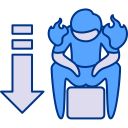
Mindfulness Meditation Practices for Reducing Stress
Mindfulness meditation has become an increasingly recognized practice for managing stress in the fast-paced modern world. By focusing attention on the present moment, individuals can cultivate a sense of peace and clarity amid their daily lives. This web page explores various mindfulness meditation practices, their benefits, and practical guidance on integrating them into everyday routines to effectively reduce stress. Whether you are new to mindfulness or seeking to deepen your practice, the following sections provide insight, strategies, and resources tailored to your stress reduction journey.
Understanding Mindfulness and Stress
Mindfulness involves cultivating a heightened awareness of your surroundings, thoughts, feelings, and bodily sensations. It encourages acceptance and curiosity rather than criticism or avoidance. Through mindfulness, individuals become more attuned to their reactions, fostering the ability to respond thoughtfully rather than react impulsively. This approach is both ancient and modern, backed by scientific research demonstrating its effectiveness for well-being.
Previous
Next
Mindful breathing calls for conscious attention to each breath as it flows in and out of the body. This focus can gently bring your mind back to the present, reducing distractions and intrusive thoughts. With time, practicing mindful breathing enables a smoother transition from stress-induced reactivity toward clarity and calm, providing a foundational skill for all other mindfulness techniques.


Body Scan Meditation Explained
A body scan meditation involves systematically focusing your attention on different parts of the body, observing sensations without judgment. This guided journey may begin at the feet and work upward, noticing tension, warmth, or even numbness as you progress. By accepting bodily sensations as they are, you gain insight into how stress manifests physically and learn to release stored tension intentionally.

Recognizing Tension Patterns
Chronic stress often produces patterns of muscle tension that go unnoticed. For example, people may unconsciously clench their jaw or tense their shoulders. Practicing body awareness uncovers these patterns, making it possible to address sources of discomfort before they escalate. Over time, enhanced awareness strengthens the capacity to relax, improving posture and reducing chronic pain associated with stress.

Integrating Body Awareness in Daily Life
You don’t need a formal meditation setting to practice body awareness. Even during mundane activities like washing dishes or walking, you can pause and notice the sensations in your body. By bringing mindful attention to these everyday moments, you reinforce a habit of self-care and presence, helping to keep stress manageable throughout your routine.
Previous slide
Next slide
In guided mindfulness meditation, instructions gently direct your attention, helping you remain engaged with the practice. This support is especially valuable when your mind feels scattered by stress. Following a soothing voice allows you to settle into relaxation more easily, discover new techniques, and develop a consistent practice that counters the effects of chronic stress.
The Power of Guided Mindfulness Meditation

Tasks like brushing your teeth, eating, or commuting become opportunities to practice mindfulness. By paying close attention to the sights, sounds, and sensations involved, you ground yourself in the present and disrupt habitual autopilot thinking. This approach reduces anxiety about the past or future and brings a sense of freshness to otherwise mundane moments in your day.

Interactions with others can become breeding grounds for stress if not handled mindfully. Practicing mindful listening—truly focusing on the other person without planning your reply—encourages empathy and deescalates tension. Responding rather than reacting leads to more positive relationships and reduces social or professional stressors, while promoting understanding and patience.

Establishing mindful routines, such as taking regular pause breaks or savoring your morning coffee, helps anchor you throughout the day. These small rituals remind you to check in with yourself, notice any creeping stress, and return to the present. Over time, these moments accumulate, creating an overarching sense of stability and well-being even in challenging circumstances.
Dealing with Distraction and Restlessness
Restless thoughts and fidgeting are normal experiences during meditation, especially when you begin. Rather than resisting these distractions, acknowledge them non-judgmentally, and patiently return your attention to your breath or senses. Over time, you’ll build concentration and discover that interruptions become easier to manage, transforming these initial hurdles into powerful learning moments for stress resilience.
Addressing Doubt or Self-Criticism
Many people worry they are “not doing mindfulness right,” especially if their minds wander or they feel little difference right away. It’s important to approach meditation with curiosity and kindness rather than self-criticism. Progress may be gradual, but each session contributes to long-term well-being. Embracing imperfection as part of the process ultimately enhances your practice’s effectiveness in combating stress.
Finding Time and Staying Consistent
Modern life is busy, and finding time for mindfulness can be a challenge. Start with brief sessions—even a few minutes can make a noticeable difference. Identify specific times in your schedule when you can incorporate mindfulness, such as after waking up or before bed. Consistency, not duration, is key. As you experience the benefits, making space for meditation will feel increasingly worthwhile and manageable.
